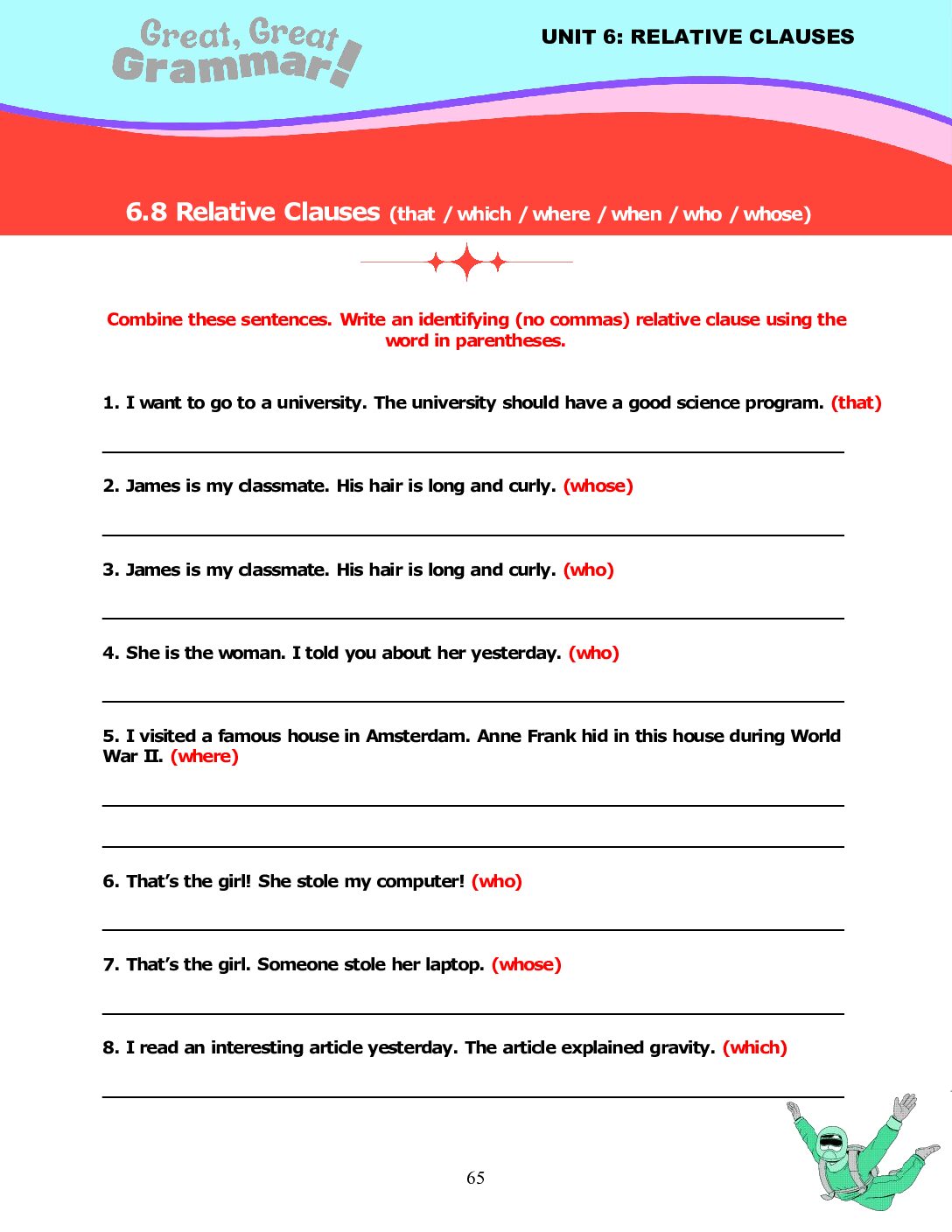In this ESL grammar lesson, students practice combining sentences using relative clauses with the words that/which/where/when/who/whose.
ESL Grammar: Identifying (Defining) and Non-Identifying Relative Clauses
Identifying relative clauses provide essential information about the noun they modify. They define or identify which specific person, place, or thing is being referred to. Without this clause, the sentence’s meaning would be incomplete.
Non-identifying relative clauses add extra, non-essential information about a noun. They provide additional details but are not necessary to identify the noun. Removing this clause leaves the main sentence’s meaning intact.
Key Differences
- Purpose:
- Identifying: Provides essential information to define the noun.
- Non-Identifying: Adds extra information, not crucial for identifying the noun.
- Punctuation:
- Identifying: No commas.
- Non-Identifying: Commas are used.
The English grammar lesson below reviews identifying and non-identifying relative clauses by having students rewrite sentences using a specific relative pronoun. Our series of ESL grammar lessons on subjects and verbs introduce these concepts and reinforce them through helpful and instructive exercises.
This lesson is available for free download, and you can download many more English grammar lessons focusing on advanced aspects of English grammar (past continuous tense, present perfect tense, present perfect continuous tense, passive voice, embedded questions, relative clauses) in our comprehensive, intermediate- to advanced-level ESL grammar textbook Great, Great Grammar! (Book 3: Tenses and More!).

